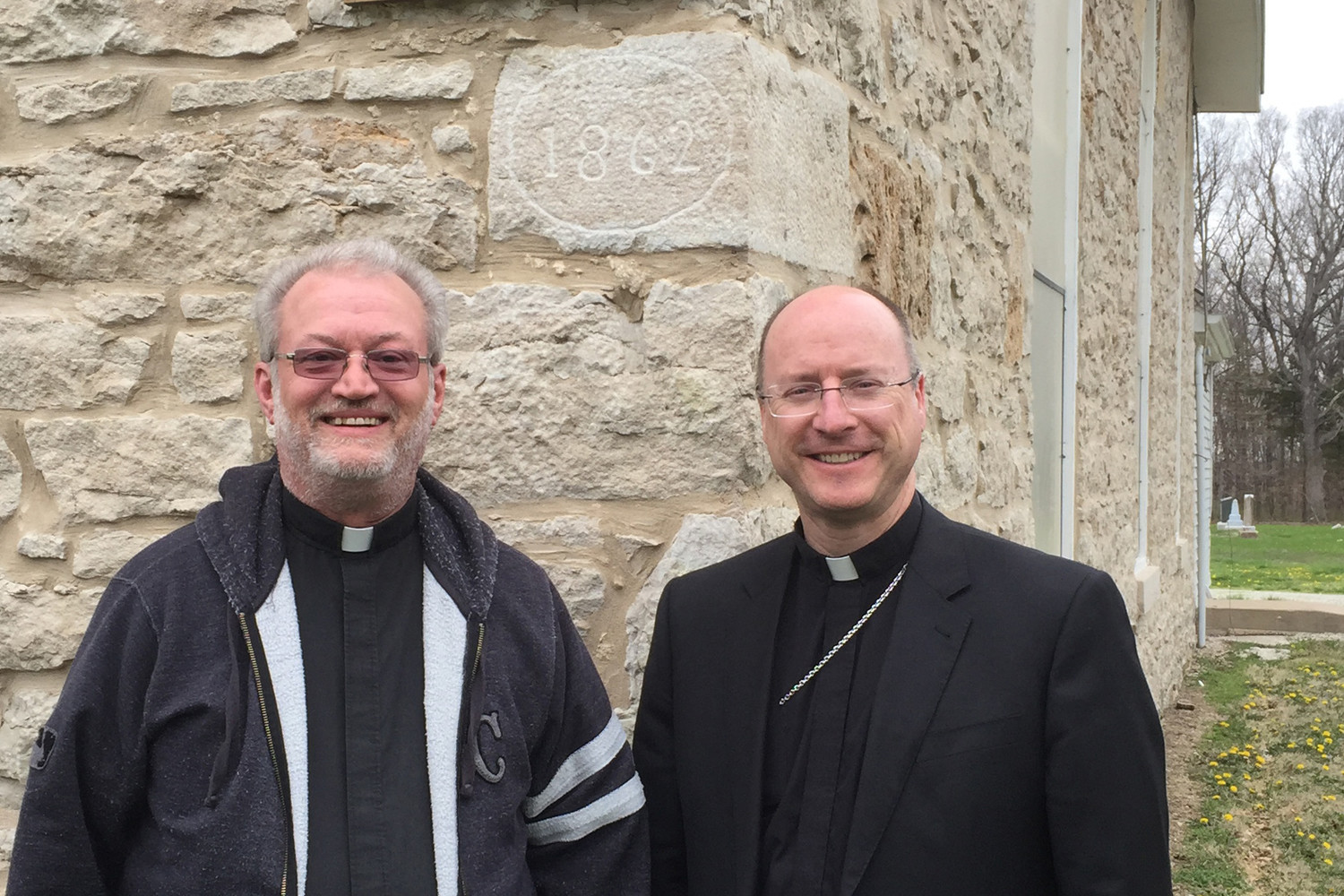Bishop McKnight visits site of Fr. Tolton’s baptism
Bishop W. Shawn McKnight stood silently among nondescript wooden crosses.
They designate the previously unmarked burial places of contemporaries of Servant of God Father Augustus Tolton — men, women and children who lived and died both as Catholics and as slaves.
Most of their names have been lost to history.
“I spent a moment of prayer there and begged all those holy souls to help us be faithful to our Lord and His teaching and to provide us what we need in this time — the wisdom and desire to know how best to help those who are less fortunate, who are ‘the least among us,’” said Bishop McKnight.
The bishop made his first personal pilgrimage to St. Peter Church in Brush Creek — site of Fr. Tolton’s baptism and previously of the marriage of his parents — before administering the sacrament of confirmation in nearby Monroe City on April 25.
It was the day after the 132nd anniversary of Fr. Tolton’s priestly ordination.
Born into slavery in 1854, Fr. Tolton escaped with his family during the Civil War and gradually overcame tremendous obstacles toward becoming in 1886 the Catholic Church’s first black priest in the United States.
Bishop McKnight walked from the slave section of the cemetery to the place where white parishioners — including those who claimed ownership of Fr. Tolton and his family but also insisted that they be baptized and catechized — are buried.
“Even in death, they were separated here on earth,” Bishop McKnight observed. “But in God’s providence, we pray that we can all be one in heaven.”
The bishop pointed out that slavery continues to thrive throughout the world, including in this country in the form of human trafficking, and that racism in more subtle forms still needs to be acknowledged and purged from society and the Church.
“That’s why it’s so important for the story of Father Augustus Tolton to keep being told now — for us to enter, truly, into his skin,” the bishop stated. “What did he experience? What did his family go through? What did his people experience? What were the prevalent attitudes back then? And how are those attitudes reflected in us today?”
The bishop encountered other signs of separation inside St. Peter Church, a nobly simple structure built of stone in the 1860s after the previous frame church was lost in a fire.
Father Michael Penn, pastor of the Monroe City and Indian Creek parishes, informed him that during and for some time after slavery, people with dark skin were relegated to the balcony during Mass and were only allowed to come down for Holy Communion on a few special occasions each year.
Bishop McKnight thought about the desire that must have created in their hearts, perhaps especially in young Augustine’s.
“Imagine someone who was so tenacious in their faith that they went from not being allowed to receive Holy Communion at Mass to feeling a call to be a priest and not giving up on pursuing that call,” said the bishop.
“Although there were priests and others who helped him, Fr. Tolton had to follow a very difficult path to the Priesthood,” he said.
Bishop McKnight pointed out how hard it was for Fr. Tolton and many who were black like him to be Catholic in this country at a time when racism and anti-Catholicism were peaking.
“We should reflect in terms of how we might grouse or complain today about what we have to suffer because of our Catholic faith, because it’s really nothing in comparison,” he said.






